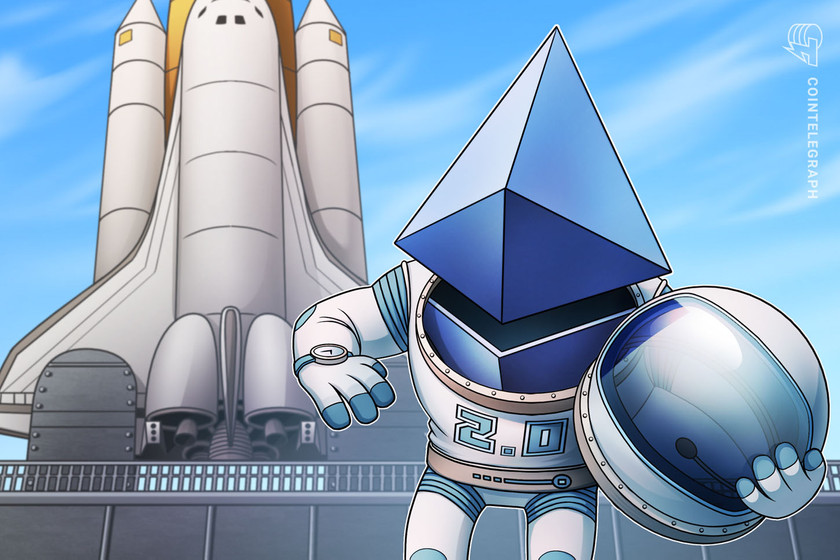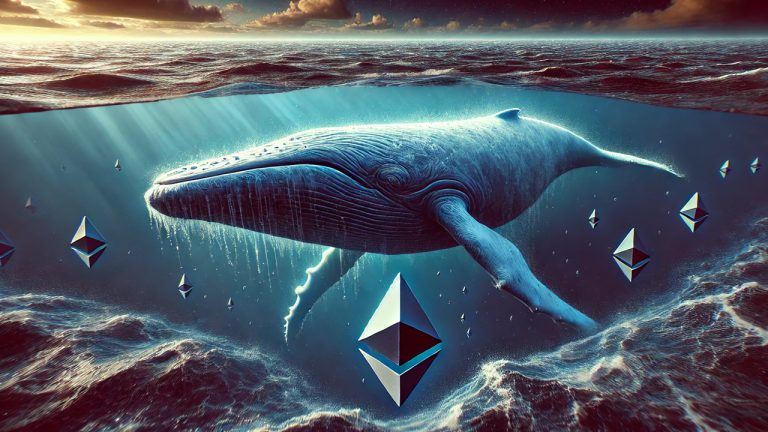
The launch of Ethereum 2.0 is bound to support DeFi growth, but would it be capable of handling the pace at which DeFi is growing?
This deposit contract is the first step that would eventually lead to the launch of Ethereum 2.0. If to consider that the launch will go down successfully, Ethereum will ship the Beacon Chain and introduce proof-of-stake to the ecosystem, which is currently based on the proof-of-work, another consensus algorithm that is based on mining. Shard chains would be the next upgrade to follow Beacon Chain.
Ultimately, the eventual launch of Ethereum 2.0 will have an effect on the decentralized finance market. In 2020, the DeFi sector has grown significantly but has already experienced a slight cooldown. Due to this, there have been claims that DeFi is a bubble that will soon burst. However, Binance CEO Changpeng Zhao has stated that, despite these signs, DeFi is here to stay and compared these early speculations to the apprehensive stance the community showed toward the ICO bubble in 2017.
Ethereum 2.0 launch would be a “boon” for DeFi
Major players in the DeFi market expect Ethereum 2.0 to have a large impact on the community, as it’s used as the foundational network for most of the DApp DeFi use cases. Cointelegraph discussed this aspect further with Steven Becker, president and chief operating officer of DeFi project MakerDAO. He said:
“Eth2 is designed to optimize the network architecture without causing decentralization, security and scalability to suffer. Upgrades should enable Ethereum to scale to thousands of times its current capacity while remaining both secure and decentralized… which will be a boon for DeFi.”
Although the scaling capabilities of Ethereum are set to increase multifold due to the launch of Eth2, whether it will be able to scale fast enough to cope with the growth of the DeFi markets remains to be seen. Sam Bankman-Fried, CEO of FTX, recently stated that he believes the Ethereum 2.0 launch will not be able to cope with the potential growth that could be witnessed in the DeFi market. He has even opted to build his own DeFi project, Serum on the Solana blockchain, instead of choosing Ethereum, which is the most popular option right now.
The multi-phased launch plan entails a lot of uncertainty as far as coping with the potential growth of DeFi markets in the same duration, according to Jay Hao, CEO of the OKEx cryptocurrency exchange, who stated further to Cointelegraph:
“We know already that it will be faster than the current chain, but we also know that it will be rolled out in iterations and that, to start with, may only be 100 times faster, perhaps a little more. We are already seeing other many blockchain solutions that can produce a faster throughput than this.”
To address these challenges, Ethereum co-founder Vitalik Buterin stated in a Nov. 17 Reddit AMA session that the benefits of Ethereum 2.0 will come faster than people expect. Hao supports this sentiment, saying: “As DeFi grows, so will Eth2, and it will become increasingly faster, more scalable and decentralized.”
Additionally, DeFi protocols could also begin ETH staking natively onto their platforms, but the downside of this would be the reduction in the decentralizing impact of the network. Patrick Collins, developer advocate at Chainlink Labs, told Cointelegraph:
“In a way, I see ETH 2.0 staking as a DeFi protocol in itself. It will be interesting to see projects incorporate staking. […] The tricky part would be finding out how to do this without hurting the security of the network since massive pools controlled by single entities is not ideal at all.”
The next update
Following the Beacon Chain upgrade, shard chains would be the next upgrade to follow. According to the Ethereum website, the capacity of the network will increase, improving the transactional speed by extending the network to 64 blockchains referred to as shard chains. Although in the initial stages these shard chains will not support smart contracts or user accounts, smart contracts support is essential for DeFi platforms due to their usage of oracles.
The most significant 2.0 update for DeFi would be Phase 1.5 where the existing Ethereum mainnet would be added to the Beacon Chain as a shard chain, transforming the network into a PoS consensus network from the current PoW consensus algorithm. Slated to launch in 2021, there is no specific date available for this transformation.
The DeFi boom has congested the Ethereum network, resulting in pushing transaction costs to an all-time high. This is perceived to be another reason for the slowdown in DeFi growth. Becker further elaborated on how the 2.0 upgrade can ease the pressure market participants are feeling: “The Sharding upgrade alone should enable a return to the days when fees to generate and send Dai cost just cents, not dollars. Inexpensive transactions would facilitate an increase in DeFi adoption and innovation.”
Kosala Hemachandra, founder and CEO of MyEtherWallet — an Ethereum-based wallet platform — even compared this expected growth to scale to the transactional levels experienced by electronic funds transfer giant Visa, telling Cointelegraph: “Increased throughput and minuscule gas prices due to Eth2 will definitely help DeFi reach the next level. Currently, Visa can process around 20,000+ transactions per second; with Eth2, we will be able to reach close to that level.”
The expected drop in network gas prices and the increase in throughput are bound to raise market participation in DeFi, as many investors faced this hurdle during the DeFi boom in the summer, which caused them to miss out on lucrative investment opportunities. The current scalability issues faced can be solved by projects launching layer-two solutions, which help to address this issue. Hemachandra chimed in on how these layer-two solutions could even help Ethereum 2.0 post-launch:
“Initial Eth2 will start with 64 shards, meaning it will be able to support at least 64x of the current volume. If we start to have more volume than that, then we will run into scalability issues. However, this is also where layer-two solutions will be extremely helpful. With proper layer-two solutions and with Eth2, we can easily achieve 128x of the current volume.”
DeFi may lose out from phased launch
Even though layer-two solutions are capable of addressing the scalability issues that Ethereum 2.0 might face, the duration through the various phases of the launch might see the DeFi market grow exponentially, as evident through triple-digit gains of DeFi tokens amid the Bitcoin bull run. All the benefits proposed by the 2.0 launch will only be effective once the final stage of Phase 2 arrives, as the shards would be fully operational and include support for smart contracts.
But this launch phase may only be two years away, as the Ethereum roadmap states that it’s still in the research phase. Even though most DeFi solutions and DApps use Ethereum as their preferred blockchain, there are other blockchain networks that could contend with it for a share of the DeFi market. Simon Peters, a senior account manager at eToro — a social trading platform — told Cointelegraph: “Ethereum’s transition to 2.0 could take a number of years to fully complete, which is why some competing networks, such as Cardano, Tezos, Tron and EOS, have used this to their advantage and acquired some of the DeFi market share.”
Ethereum’s transition to 2.0 is happening in a live environment, as 1.0 needs to run seamlessly during the different phases of the launch. Peters alluded to the risks that this live transition currently means for the DeFi protocols:
“They are doing so whilst in a live environment. This is not easy, especially when Ethereum already supports a large number of DeFi protocols. They also run the risk that any issues in the migration or delay of the 2.0 rollout may cause developers to build elsewhere or take projects to a competing network.”
Even though there isn’t just one contender to Ethereum for DeFi and DApps, Ethereum is set to be critically important to DeFi, and that its contribution will only grow as the technology matures. Thus, the interaction between Ethereum and other blockchains that are beginning to operate in the DeFi space is of high significance. Hao elaborated on how these solutions would need to evolve: “The real key is in making these solutions compatible with Ethereum and interoperable with other blockchains. I think that is one of the most exciting things about the DeFi space — the constant innovation that we see.”
The Ethereum deposit contract for Phase 0 of the Ethereum 2.0 launch went live on Nov. 4, slating the launch of Phase 0 on Dec. 1. Stakers would need to deposit 32 Ether (ETH) into the contract to participate. The deposit contract needs to accumulate 16,384 deposits of 32 ETH — i.e., $200 million for the launch to be successful.
[…]
Learn more









Leave a Reply